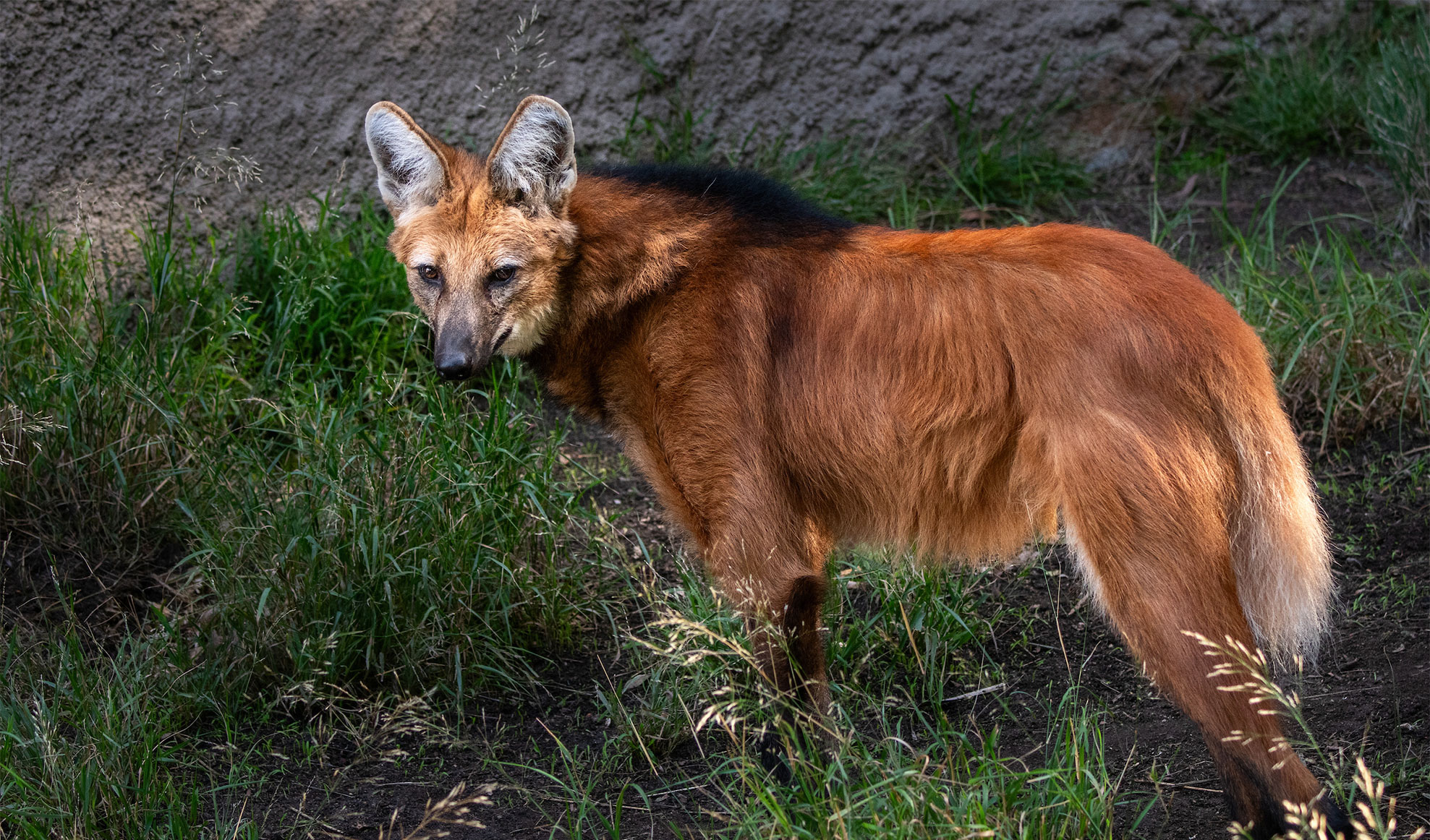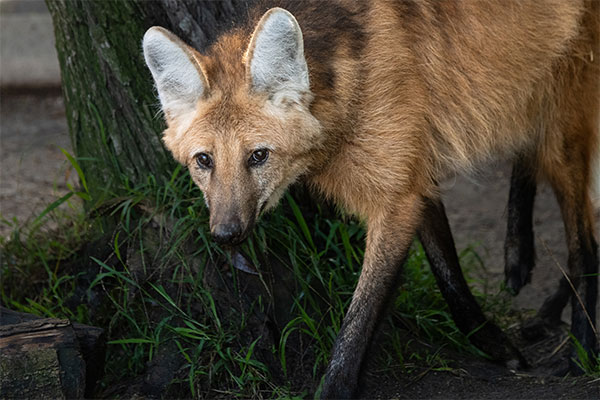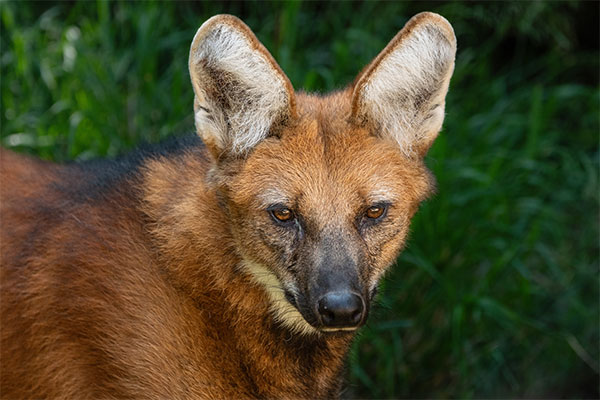About
This member of the canine family from South America is sometimes described as a “fox on stilts.” However, genetic studies show that it is neither a wolf nor a fox, but a unique species that belongs in its own genus. It is named for the long, dark mane that stands up when this animal senses danger. Exceptionally long, slender legs allow these wolves to see over the tall grasses of their Cerrado (savanna) habitat. They are nocturnal, solitary, ambush hunters and use their large ears to pinpoint the location of prey. Maned wolves will tap the ground to flush out prey and rear up to pounce with their forepaws like a fox. They also dig up burrows to reach rodents and leap into the air to catch birds and insects. At least 50 percent of their diet is fruit and plant matter. The maned wolf’s favorite fruit is the “wolf apple” (Solanum lycocarpum), a tomato relative that looks like a husk-less tomatillo and smells like an apple. Individuals will share their range with a mate, but they travel, hunt, and rest alone.
Maned wolves are monogamous, although the male and female are rarely together outside of the breeding season. After a gestation of about two months, two to five pups are born. The mother is the primary caregiver, but the male helps by hunting and regurgitating food for the pups. Pups mature in about a year.
At the Zoo, you will likely smell the maned wolves before you see them. Maned wolves mark their territory with scent glands, as well as urine and feces deposited around the perimeter. Human activity is the maned wolf’s largest threat. Their habitat has been lost to agriculture and pasturelands, and ranchers often kill them out of fear they will prey on livestock. Additionally, some of the wolves’ body parts are sought due to their supposed supernatural properties. However, many zoos and conservation programs are working together to educate people and maintain healthy assurance populations.
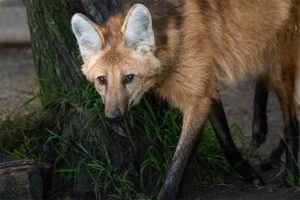
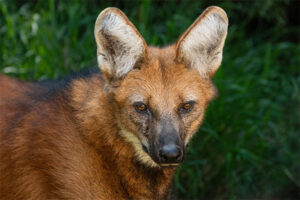
Habitat
Maned wolves are found in grasslands, plains, and forests throughout South America.
Diet
These canids are omnivorous, eating rodents, armadillos, and birds as well as eggs. Half of their diet is comprised of fruit and plants.
Physical Characteristics
Body length is between three and four feet, and they can reach three feet at the shoulder. Weight is roughly 50 pounds, and lifespan is 12 to 15 years.
LOCATION WITHIN THE ZOO
You’ll find this animal in the South America section. See Zoo Map.

